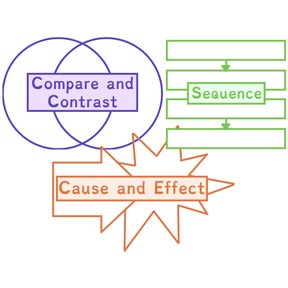
Connection between scientific ideas/concepts
I can make connections between scientific ideas/concepts.



8,000 schools use Gynzy
92,000 teachers use Gynzy
1,600,000 students use Gynzy
General
In this lesson, students learn that a connection is how two ideas relate. Students will make connections between scientific ideas and concepts: compare and contrast, cause and effect, and sequence. Explanations and examples will be given for each, and students will have plenty of opportunities to practice with creative and engaging activities.
Common core standards
CCSS.ELA-Literacy.RI.2.3
Learning Objective
Students will be able to describe the connection between a series of scientific ideas or concepts in a text.
Introduction
Students will drag the puzzle pieces to form the word, “Connection.” Have them discuss what they think the word means. Discuss as a class and explain that when you make connections, you can better understand what a text means and better remember the information. Introduce the three text structures: compare and contrast, cause and effect, and sequencing.
Instruction
First, go over comparing and contrasting. Read the passages on tsunamis and tornadoes. Then discuss the accompanying bubble map. Next, go over cause and effect and read the passage about frostbite. Guide students to determine the cause and effects. Finally, discuss sequence and read about the water cycle then use the words, First, Next, Then, and Last to make connections. After this, students will practice by dragging phrases about the different habitats into the appropriate columns to compare and contrast. Students will then use the bubble map to compare and contrast animals. Read the passage about pollution together and have students identify the effects. Practice sequencing with the frog’s and butterfly’s life cycles.
Quiz
Students respond to 10 questions which ask students to identify cause, effect, connections and identify them in a text.
Closing
There are three activities on the board. The first is a spinner for comparing and contrasting different types of weather. Next, there is a memory game of cause and effect with various scientific causes and effects. Finally, students will sequence the life cycle of a plant by walking a character through a mini maze to follow the sequence of the life cycle.
Read our blog post to learn more about reading comprehension exercises!
The online teaching platform for interactive whiteboards and displays in schools
Save time building lessons
Manage the classroom more efficiently
Increase student engagement
Discover more!
About Gynzy
Gynzy is an online teaching platform for interactive whiteboards and displays in schools.
With a focus on elementary education, Gynzy’s Whiteboard, digital tools, and activities make it easy for teachers to save time building lessons, increase student engagement, and make classroom management more efficient.



